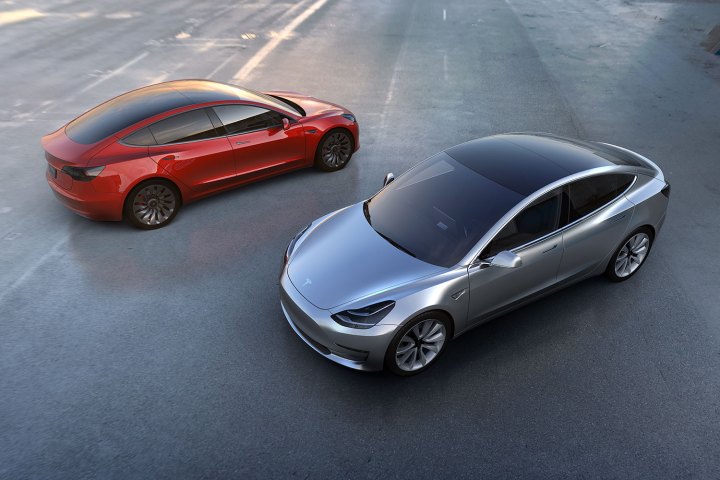
Tesla did post record revenue ($3.3 billion), buoyed by customer deposits for its new semi truck and Roadster sports car. But the automaker still lost $771 million in the fourth quarter. Tesla also reported a negative free cash flow of $276.7 million, and a net loss of $2.24 billion for 2017. In 2016, Tesla reported a $773 million net loss.
This additional quarterly loss underscores the need for Tesla to ramp up production of the Model 3. Tesla delivered just 1,550 of them in 2017, owing to production bottlenecks. Musk has said that he wants Tesla to build 500,000 cars a year beginning this year, and the more affordable Model 3 is expected to make up the bulk of that output.
Tesla said it is on track to meet a previously stated goal of building 5,000 cars per week by the end of the second quarter. That milestone has already been pushed back twice. Tesla said in July 2017 that it would be making 5,000 cars a week by the end of that year, then said it would hit that target by the end of the first quarter of 2018. In January, Tesla quoted second-quarter 2018 as the new goal, and it’s still sticking to that.
Tesla spent $787 million on capital expenditures in the fourth quarter, which was below its projections, but said spending would be “slightly more” this year, according to Reuters. The automaker anticipates expenditures to expand production capacity at its Fremont, California, assembly plant, and Reno, Nevada “Gigafactory” battery plant, as well as for development work on the semi truck, the Model Y SUV, and a factory in China.
Thanks to robust Model S and Model X demand, Tesla delivered 103,122 cars in 2017. That’s a significant increase over the roughly 76,000 cars it delivered in 2016, and marks the first time Tesla has delivered more than 100,000 cars in a year. But the full-year financial results show that 2017 was a mixed bag for the world’s most talked-about automaker.
Editors' Recommendations
- Cybertruck production reportedly halted over pedal issue
- Fly through Tesla’s Giga Berlin factory in this epic drone video
- Here’s how Ford will give EV customers Tesla Supercharger access
- New Model 3 ‘takes out the baby fat,’ Tesla designer says in new video
- Tesla video shows off Cybertruck’s Basecamp tent attachment


